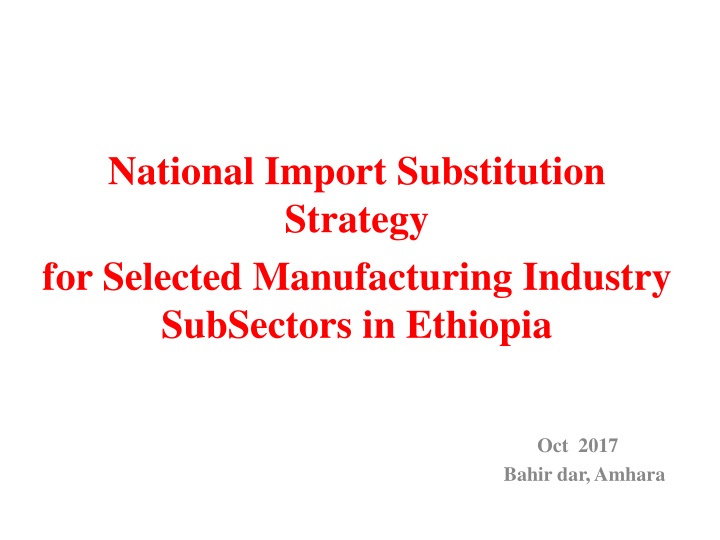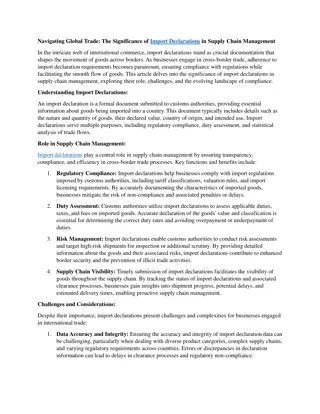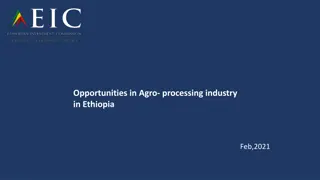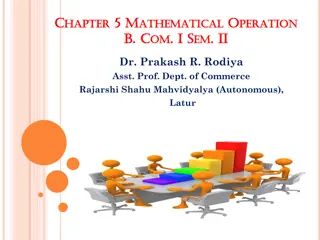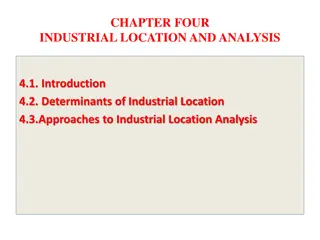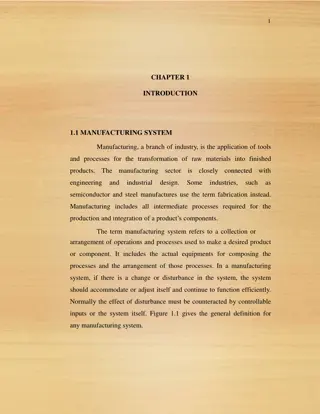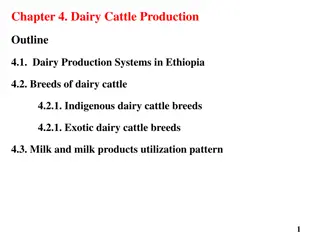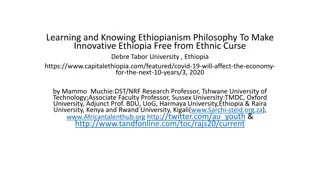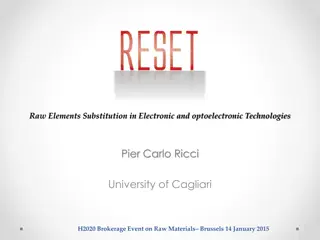National Import Substitution Strategy for Manufacturing Industries in Ethiopia
This document outlines a rigorous framework for assessing import substitution strategies in selected manufacturing industry sub-sectors in Ethiopia. It identifies priority products, analyzes import trade performance, and proposes strategic interventions for the next five years to enhance domestic market competitiveness.
Download Presentation

Please find below an Image/Link to download the presentation.
The content on the website is provided AS IS for your information and personal use only. It may not be sold, licensed, or shared on other websites without obtaining consent from the author.If you encounter any issues during the download, it is possible that the publisher has removed the file from their server.
You are allowed to download the files provided on this website for personal or commercial use, subject to the condition that they are used lawfully. All files are the property of their respective owners.
The content on the website is provided AS IS for your information and personal use only. It may not be sold, licensed, or shared on other websites without obtaining consent from the author.
E N D
Presentation Transcript
National Import Substitution Strategy for Selected Manufacturing Industry SubSectors in Ethiopia Oct 2017 Bahir dar, Amhara
This document is based on A rigorous framework has been built to assess import volume, value, and local production efficiency to prioritize products. Primary data from 197 manufacturers have been collected and analyzed to determine competitive industries and supply-side challenges, supplemented by the national manufacturing survey secondary data from ESS (previously CSA) 2019/2020 publication and sectoral diagnostic studies by Dalberg Advisors for the Ministry of Industry Nine International benchmarking have been conducted to identify strategic interventions for Ethiopia for the next five years while also prioritizing quick-win interventions to roll out under the Ethiopia Tamrit Movement, a flagship initiative pioneered by the Country s top government leadership.
Using a ten-year(2011-2021) import trade performance and domestic productivity analysis, 93 import substitutable commodities are identified under five manufacturing industry sub-sectors. 11 priority food and beverage commodities have been identified with potential substitutability until the medium term for most products 33 priority textile and garment commodities have been identified with 49% domestic market share; cotton, natural and synthetic fibres are also identified as strategic commodities to further accelerate their competitiveness in the domestic market. 8 commodities are identified from the leather and leather products sector with 66% domestic market share, petrochemicals 23 prioritized commodities from the chemicals and construction inputs sector 18 prioritized commodities are from the metal and engineering sector
Purpose is to outline an inward-looking industrial approach for Ethiopia s manufacturing industry to enhance domestic market competitiveness and ensure balanced growth. is to identify competitive products to support industrialists from the food and beverage, textile, leather, chemical and construction inputs, and metal and engineering manufacturing industries and, to develop a five-year phased implementation roadmap after assessing the root causes of sectoral challenges; the agriculture, mining, and pharmaceuticals sectors are also lightly incorporated to identify sectoral overview for import substitutability.
for a timely intervention to boost the market share of domestically produced manufactured goods and stabilize the foreign currency shortage. The document is intended foremost to articulate the strategic direction of activities to be taken by the Ministry of Industry to substitute imports for selected commodities in the coming years
Introduction and Background Import Substitution Industrialization (ISI) is an 18th -century industrialization concept applicable in the 21st century to promote domestic manufacturing competitiveness. import substitution (IS) describe IS as a development strategy focusing on the promotion of domestic production of previously imported goods through stages beginning with nondurable consumer goods, gradually transitioning to manufactured goods export and export diversification.
Or an interactive process that requires strategic and planned interaction between the private and public sectors to discover where action is needed and what type of action can bring forth the greatest response to generate policy initiatives in response to market constraints and bring about industry competitiveness. It is a popular industrialization tool widely adopted since the mid-20th century. ISS has been implemented using policy tools, instruments, and strategic development practices.
Objective and Scope To define import substitution and identify why it is used as an industrialization strategy for Ethiopia II. To prioritize high-potential competitive commodities and value chains and identify their bottlenecks III. To develop value-chain-specific and cross- cutting interventions with a high-level implementation plan I.
Ethiopias Import Trade Performance Ethiopia's trade composition consists of export commodities include coffee, oilseeds, flowers, and vegetables, while the top import commodities include machinery, vehicles, and fuel.
According to the latest data available from NBE in 2020, the top imports into Ethiopia and their respective shares of total imports were refined petroleum (12.4%), pharmaceuticals (6.5%), fertilizer (4.5%) wheat (4.4%), cars (4.1%), palm oil (3.6%), telecom equipment (3.4%), rice (2.9%), machinery for electricity (2.8%), and other furniture (2.5%). Other significant imports into Ethiopia include cement, sugar, iron and steel, and textiles. Some of the largest consumer goods imported to Ethiopia include vehicles imports both new and used vehicles to meet the growing demand for transportation; electronics import driven by increasing use of technology such as smartphones, laptops, and home/office appliances are in high demand.; textiles and apparel are the other largest imports followed by food and beverage and cosmetics.
Total imports and the share of imports of selected five manufacturing sub-sectors (Bn USD
Manufacturing industries in Ethiopia are net importers with a negative trade balance over the last ten years, with a stagnant export and a linearly growing import.
The largest manufactured goods export comes from the food and beverage sector where besides the export of the major primary commodities such as coffee, oil seeds and pulses export of tea, spices, and cut flower are the main items exported. The Rationale for Developing Import Substitution Strategy Now Working on IS for stabilizing the macroeconomy from a long-term point of view is well grounded on the fact that Ethiopia is in shortage of foreign currency as a predominantly importing country. For assuring food self-sufficiency To address Ethiopia s industrialization paradox and bring about improved competitiveness
Competitive Sub-Sector and Commodity Identification Based on the analytical framework, the prioritization was conducted considering: i) domestic demand of imported commodities trend ii) domestic supply (production) of product categories to identify import dependency, iii) substitution potential in terms of quality of production (import standards) to assess whether locally produced goods can meet imported commodities quality standards including input use as well as efficiency and iv) focus of government and regulatory barriers, ongoing government initiatives and policy priority including value chain development status.
Textile and apparel sub-sector Thirty-three textile and apparel products have been prioritized based on their competitiveness to substitute imports and their importance to long-term sector development. The prioritized products in the textile and apparel sub-sector can broadly be divided into two groups. The first group includes products such as trousers, overalls, shorts, men's underwear, babies' garments, t- shirts, singlets, tank tops, stockings, and socks. Although raw materials are somewhat available, the main challenges are limited production size and product mixes compared to the huge demand. Manufacturers have good experience in producing these items, but they are operating below capacity. The second group includes products such as synthetic fibres that are not competitive now but are important for sectoral growth in the long term. These products include filament tow, fibres of polyester, artificial acetate filament tow, filament yarn of polyester, yarn made of acrylic, high tenacity filament yarn of polyester, and sewing thread of filament yarn.
High-potential manufacturing product categories for import substitution in the textile and apparel sub-sector
Leather and leather products sub- sector Eight products have been prioritized in the leather and leather products sub-sector based on their competitiveness to substitute. Among the products that have high competitiveness for import substitution are leather footwear, other footwear (such as ladies' shoes, non-leather shoes, sports shoes, and safety shoes), and other footwear made of rubber or plastic. Leather footwear and other footwear are also competitive due to the raw materials and technology availability. However, the challenge with these products is the insufficient availability of non-leather raw materials and the need for skill improvement. The demand for rubber footwear is also high, but the lack of plastic input suppliers and adequate technology and skills remains a challenge. Through targeted interventions, adequate production of these commodities can also be realized in the medium term
Additionally, leather goods and non-leather goods have their competitiveness due to their raw material and technology availability, but they face challenges such as the lack of synthetic/non- leather input suppliers, and time it may take to attract investment or expand production. Finally, there are other components and accessories, such as shoe soles, lasts, and molds, which are critical for sustainable footwear production and also have high investment interest from FDI companies. However, there is limited technology and skill available now, so it may take some time to build skills and transfer technology to expand domestic production.
High-potential manufacturing product categories for import substitution in the leather and leather products sub-sector
